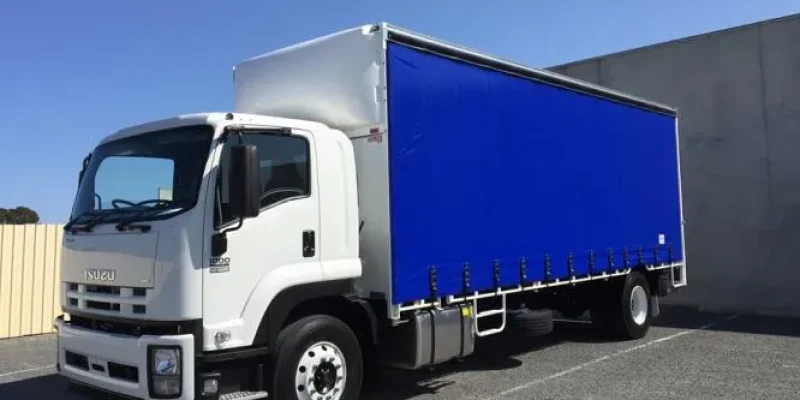If you’re considering getting your Heavy Rigid (HR) truck licence in Australia, you’re on the right path to a rewarding career in the transport industry. A HR licence allows you to drive heavy rigid trucks, including vehicles like buses, delivery trucks, and larger construction vehicles. This guide will walk you through the essential steps, requirements, and tips to ensure a smooth and successful HR licence journey.
At DKT Licence Hub, we understand the importance of preparing for your HR licence test. Whether you’re a seasoned driver looking to upgrade or a new driver eager to get started, this guide will provide you with everything you need to know.
1. What is a Heavy Rigid (HR) Licence?
A Heavy Rigid (HR) licence is required for operating trucks with a gross vehicle mass (GVM) over 8 tonnes, including vehicles with more than two axles. This type of licence gives you the ability to drive a range of larger vehicles that are essential for transporting goods and people across Australia.
HR vehicles can include:
- Trucks used for delivery services
- Larger construction vehicles
- Buses
- Specialised equipment like tankers or refrigerated vehicles
To gain this licence, you must meet specific eligibility criteria, complete required training, and pass both a theory and practical test.
2. Eligibility Criteria for an HR Licence
Before you start the process of obtaining your HR licence, it’s important to make sure you meet the eligibility requirements. These vary slightly depending on your state, but the general requirements are as follows:
- Age Requirement: You must be at least 18 years old.
- Hold a Full Car Licence: You need to have held a full (unrestricted) car licence for at least two years.
- Health Requirements: You must pass a medical examination to ensure you’re fit to drive a heavy vehicle. This may involve vision tests and hearing checks.
- Previous Experience: In some cases, having prior experience driving a light truck or a similar vehicle can help speed up the process, but it is not mandatory.
Meeting these basic requirements sets the foundation for your HR licence application.
3. The Process of Obtaining an HR Licence
Step 1: Enrol in a Heavy Rigid Licence Course
The first step is enrolling in a training course with a certified driving school like DKT Licence Hub. These courses provide the necessary instruction and behind-the-wheel experience required to pass the HR licence test.
During your training, you’ll learn essential skills such as:
- Vehicle handling and manoeuvring
- Road safety and traffic regulations
- Pre-trip vehicle checks
- Loading and unloading procedures
A qualified instructor will guide you through the entire process and ensure you have the confidence and competence to operate a heavy vehicle safely.
Step 2: Complete Your Training and Assessments
Once you have completed your course, you will need to pass both the theoretical and practical assessments. The theory test typically covers road rules, safety protocols, and the specific requirements for operating a heavy vehicle.
The practical driving test involves:
- Demonstrating basic vehicle handling skills
- Successfully navigating a designated driving route
- Completing manoeuvres like parking, reversing, and turning in tight spaces
It’s crucial to practice these skills extensively with a qualified instructor to ensure you’re ready for the practical exam.
Step 3: Book and Pass the HR Licence Test
After completing your training and assessments, the next step is booking your HR licence test with the relevant local authorities. The test will involve:
- A road rules knowledge test (written or online)
- A practical driving test with a licensed examiner
Once you pass both parts, you’ll be issued your Heavy Rigid truck licence.
4. Tips for Passing the HR Licence Test
To increase your chances of success, here are some helpful tips:
- Practice Regularly: The more you practice, the more confident you’ll feel behind the wheel. Focus on key skills like reversing, parking, and handling a large vehicle.
- Stay Calm During the Test: It’s natural to feel nervous, but staying calm and composed will help you focus and perform better.
- Know the Road Rules: Study the Australian road rules and regulations to ensure you understand how they apply to heavy vehicles.
- Prepare for the Practical Test: Take the time to review the driving routes and manoeuvres commonly tested in HR licence practical exams.
5. What Happens After You Get Your HR Licence?
After obtaining your HR licence, you’ll be qualified to operate heavy rigid vehicles. However, the journey doesn’t end there. To keep your licence valid, you’ll need to:
- Follow all road rules and regulations
- Regularly complete vehicle inspections and maintenance
- Renew your medical certificate, as required
- Stay updated on new laws and changes to heavy vehicle regulations
Having an HR licence opens up a wide range of career opportunities, from long-distance truck driving to local delivery services. The demand for skilled drivers is high, and the skills you acquire can set you up for a successful and long-lasting career in the transport industry.
6. Why Choose DKT Licence Hub for Your HR Training?
At DKT Licence Hub, we are dedicated to providing high-quality training and resources to help you get your HR truck licence. Our team of experienced instructors ensures that you receive personalized training and support throughout the entire process.
We offer:
- Tailored training programs
- Expert instructors with years of experience
- Flexible scheduling options
- Comprehensive test preparation
Whether you’re upgrading from a Light Rigid (LR) licence or starting from scratch, we are here to guide you every step of the way. Get in touch with us today to start your journey towards obtaining your Heavy Rigid truck licence!
For more information on truck licences, visit our Heavy Vehicle Licencing page.

